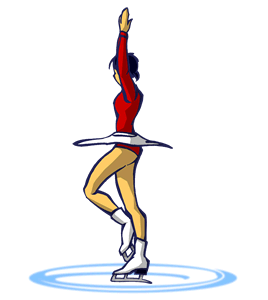|
Balance (Static) Activities
- Outcome A (4-6)-4
Students explore holding balances on different
body parts and at different levels.

For example:
- Three body parts –
high level
- Two body parts, one
of them a large body part – low level
- One body part –
medium level
- Three body parts, with
one of these body parts on a bench or trestle.
 |
Levels, Shapes, Directions and Pathways |
Now practice twisting actions. Ask students to
turn 360 degrees on two feet. Repeat the turn using one foot. Ask
the students which is easier. (One foot.) Ask which turn makes them
feel more stable. (Two feet.)
Practice twisting with arms close to the body
and then far from the body. Ask the students which makes them twist
faster. (Arms close to the body.) Have them try a twist starting
with the arms wide, and then quickly bringing the arms to a close
position.
End the activity with students moving from a balance
to a twist to a balance.

Vary the balances to different parts of the body,
such as feet, hands and knees, and hips.
Try balances with partners.
Vary the levels of the balance to include low,
medium, and high.
Combine balances to form a routine.
Add music once the routines have been established.

These
are clues that you have reached the outcomes ...
Students demonstrate routines for their classmates.
Peer and/or group evaluations can be used at different
stages. Partners can evaluate each other during creation of a routine.
The group can then evaluate the final performance based on criteria
such as holding a balanced position firmly, and twisting without
allowing the body to move from the pivot point.
back
to top
|


